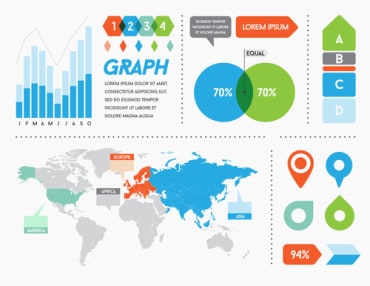
By using supervised machine learning, a BPM tool could find valuable patterns in data and automate business processes.
According to a recent survey from McKinsey, about 37 percent of business process have been digitized, from e-commerce, to CRM, to supply chain procurement. That number might seem low, but it’s enormous progress since big companies first began to clamor over achieving “digital transformation”—the idea of equipping themselves with intelligent software that can automate a variety of processes, whether that’s managing customer experiences, sales, logistics, compliance, and much more.
In the past, the goals of digital transformation were met primarily with business process management (BPM) tools, which aim to help companies orchestrate resources, route work to the right people, automate routine manual tasks, and enable self-service where none existed before. In a business landscape where companies need to be more agile and ever, always ready to pivot, BPM tools have helped line-of-business and IT departments align their goals and work together more efficiently.
As artificial intelligence (AI) becomes more prevalent in other business units, more businesses are considering whether the same technology could be used to push their BPM tools even further. The idea is that by connecting AI to existing BPM tools, and delivering the data generated by digitized processes to AI systems, companies could do even more work to cut human latency (and thus costs) out of processes while also delivering a better end product to customers.
Plugging AI into the BPM picture
AI technology is becoming predominant in marketing tools such as CRM, for example, and is likely to be one of the first places where AI-enabled BPM tools make the most headway.
Sometimes, examples work best—let’s say there is an marketing and sales team that often parses online dashboards to figure out which customers are the highest-value targets for some personalized email campaigns. Each of these employees needs to take time with not only the overall dashboard, but also the individual accounts to determine which type of personalized is best.
By using supervised machine learning, a BPM tool would be “taught” how to navigate these dashboards and find the most valuable targets. The AI picks up on which area of the dashboard are clicked on most frequently, which numbers are relevant, and starts to recognize patterns in the process—even more rare edge cases that make the human workers spend a little bit more time.
After this training phase is over, the BPM tool is be able to parse these dashboards entirely on its own, and would only alert the existing marketing/sales staff if something falls outside of its previous “lessons.” The staff only then needs to issue a directive, and the tool learns even more. By eliminating the manual processes from determining the best targets for marketing, the BPM tool allows human employees to focus on more complex processes that drive more productivity and revenue, such as fine-tuning those personalized campaigns for higher conversion rates.
The great thing about this situation is that it doesn’t require that AI is built into the platform from the beginning—thanks to the increased usage of cloud applications, it’s easier than ever to synchronize applications and AI with APIs or other integrations.
BPM and artificial intelligence: what will work?
Digital transformation, and all of its associated goals and technologies—AI and BPM included—are no easy task. It’s difficult enough for agile startups to pick up new tools and try things differently, but it’s an entirely different ask of big enterprises. Companies need to align a number of elements in order for this AI-driven BPM revolution to work:
- Prioritize a hybrid approach: Initially, BPM tools should be leveraged toward only repeated, low-skill task. Automating this low-hanging fruit will save the most, in terms of the time and energy high-skill employees spend on low-creativity tasks. More complex tasks, like using AI to automate an entire supply chain, for example, will need to wait until either the underlying technology improves or the business has already done enormous work to improve the underlying processes.
- Identify feasibility across the company: AI will be most successful if it’s put toward areas where the high skills of human employees can be most supplemented with the sheer power of AI. Lots of due diligence in understanding requirements is needed.
- Align data with goals: Companies need to prioritize collecting and analyzing the data that will directly lead to better customer experiences. Are you looking to gauge your productivity, or are you looking to compare processes against each other?
- Create an improvement-oriented culture: In conjunction with feasibility and aligning goals, the C-suite should deploy an improvement-focused culture from the top-down.
- Look for “semi-structured data”: Analytics solutions are good at finding trends in either structured data, but semi-structured data could present opportunities to match human creativity with AI gruntwork.
- Experiment with the “constellation”: BPM tools are driven by a number of other technologies and platforms, such as containers, IoT, ambient computing, robotic process automation, open source communities, and more. Companies wanting to leverage AI for BPM need to be willing to experiment, fail, and try again until they find a working solution.




























